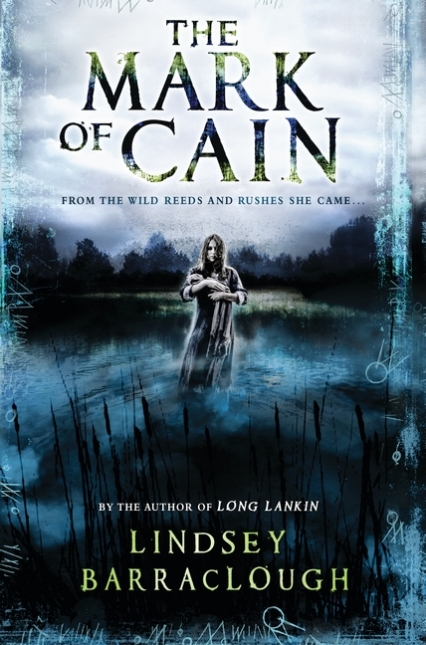The Mark of Cain
- By Lindsey Barraclough
- Candlewick Press
- 496 pp.
- Reviewed by Kali Wallace
- August 16, 2016
This slow-burning sequel will thrill some readers with its eerie atmosphere.

Lindsey Barraclough's sequel to her 2011 debut, Long Lankin, returns to the oppressive walls of Guerdon Hall both 400 years before and four years later for a second gloomy, atmospheric horror tale. Like its predecessor, The Mark of Cain is a spooky, often terrifying story steeped so deeply in the ominous feeling of a singular place that the richness of the setting carries it along even when a sluggish pace and rotating points-of-view threaten to derail it.
The novel opens in 1567 with a familiar character for those who have read the first book: Aphra Rushes, companion to Long Lankin, and the witch responsible for the powerful curse that has plagued the Guerdon family for centuries. Still, readers unfamiliar with Long Lankin won't find themselves lost, as Barraclough tells this story of Aphra's life with vivid historical detail.
The novel doesn't flinch from portraying the brutality Aphra and her companion Lankin face as poor outcasts in a superstitious society. Their lives end, inevitably, in violence and tragedy, but because this is a supernatural tale, that is where the rest of the story begins.
Four centuries later, it's 1962, and sisters Cora and Mimi Drumm have returned to the rural English village of Bryers Guerdon and their ancestral home of Guerdon Hall. It's been four years since the events of Long Lankin, which are mentioned often and reverberate strongly here. Cora and Mimi's ne'er-do-well father has brought his daughters back to Guerdon Hall with the dream of modernizing the old estate, moving out of London, and impressing his new girlfriend.
As anybody who has ever tried to renovate an old house within the pages of a horror novel knows, this plan is doomed from the start, but it's Cora and Mimi who have to deal with the consequences. Their father spends the majority of the book conveniently away.
Strange things begin happening almost immediately: Brand-new wallpaper peels away from the walls, mysterious women lurk in the night, odd objects and markings appear around the estate with no apparent explanation — none that Cora knows, that is, but one which an astute reader will pick up on a few hundred pages before Cora does. Even so, the spookiness is remarkably effective as winter approaches, the girls become more isolated, and the adults in their lives grow more distant and less reliable.
The narrative rotates with sometimes frustrating abruptness between points of view, with scene changes that are more suited to quick-cut movie editing than novel narrative. Cora, the older sister at 16, is suitably tormented by events unfolding around her, but it strains credulity that she's living in the same house where she previously endured supernatural horrors and does not know immediately something equally sinister is going on now.
The village boy Roger returns as well, still traumatized by past events, once again proving to be a good and reliable friend. There are also glimpses into the mind of Aphra Rushes herself, which mostly serve the purpose of spelling out what's happening to readers.
Notably missing is younger sister Mimi’s point of view. From the start, she knows a great deal more than her sister but stubbornly refuses to speak of it — a narrative trick that grows exasperating.
The oddly framed viewpoints, glacial pacing, and retreading of familiar territory are some pretty serious weaknesses to carry through a novel that's nearly 500 pages long. But the book is compelling in spite of them, largely because what Barraclough does well within those pages she does exceptionally well, and that's create a marvelously terrifying atmosphere of bitter winter darkness, heartbreaking loneliness, and malevolent magic in a setting so vivid it will have readers flinching at every shadow outside their windows and creak in their walls. This vision of rural England in 1962 is a place of abundant cold, with storms both natural and supernatural, and helpless isolation for children. There, a kind word and a safe place resonate all the more strongly for how rare they are.
Whether the balance between the novel's weaknesses and strengths adds up to an engaging read is a matter of taste. Readers looking for snappish, quick characters and a fast-moving, complex plot may be disappointed both by how slowly things move and how easy it is to predict what happens. But anyone wanting to settle in for a long, leisurely, and undeniably eerie night of chills will find a lot to love in this return to Guerdon Hall.
Kali Wallace is the author of Shallow Graves, a young-adult horror novel from HarperCollins, as well as several science fiction and fantasy short stories.

